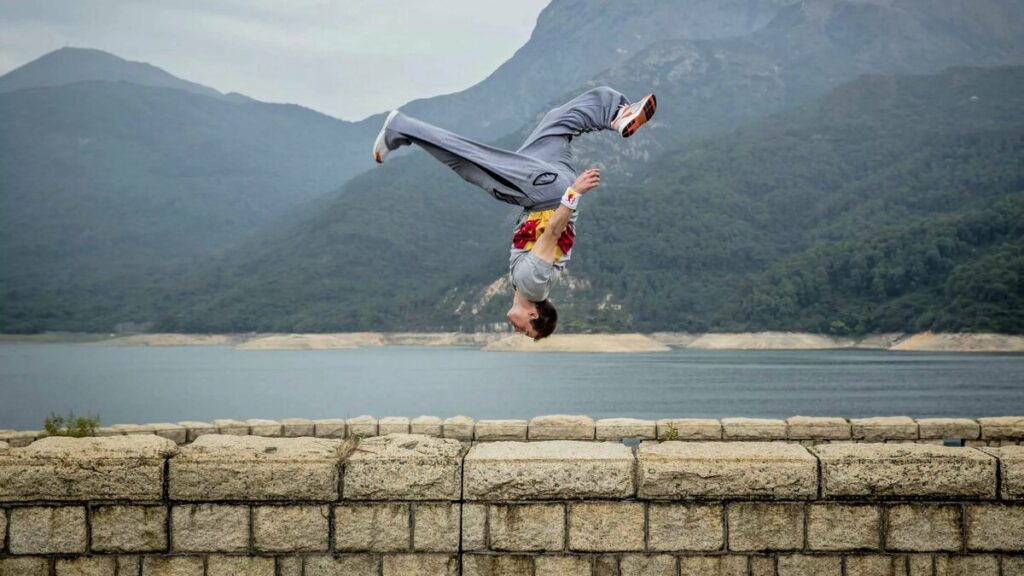The LifeHacker has selected simple tips, services and applications.
In addition to excellent marks in math, the ability to count in the mind gives a lot of advantages throughout life. By practicing computation without a calculator, you:

Keep your brain toned. To work effectively, the intellect, like the muscles, needs constant training. Account in the mind develops memory, logical thinking and concentration, increases the ability to learn, helps to quickly navigate the situation and make the right decisions.
Take care of your mental health. Studies show Could mental math boost emotional health? that oral counting involves the areas of the brain responsible for depression and anxiety. The more active these areas are, the less risk of neurosis and black longing.
You’re afraid of punctures in everyday situations. The ability to quickly calculate change, tip size, calorie count or credit interest protects you from unplanned spending, overweight and fraud.
You can master the fast account techniques at any age. It’s okay if you slow down a little first. Daily practice basic arithmetic operations for 10-15 minutes and in a couple of months you will achieve noticeable results. Need to know multiplication for 4th grade.
How to learn how to put it in your mind
Let’s summarize the unambiguous numbers
Start your training from the elementary level – adding unambiguous numbers with a transition through the ten. This technique is mastered in first grade, but for some reason it is often forgotten with age.
Suppose you need to add up 7 and 8.
Count how many seven is missing to ten: 10 – 7 = 3.
Add up the eight to the sum of three and the second part: 8 = 3 + 5.
Add the second part to ten: 10 + 5 = 15.
Use the same method of “reliance on ten” when adding unambiguous numbers with two-digit, three-digit, and so on. Refine the simplest addition until you learn how to perform one operation in a couple of seconds.
Let’s summarize the multi-digit numbers
The main principle is to break down the summed up numbers into digits (thousands, hundreds, tens, units) and sum up the same ones among themselves, starting with the largest ones.
Suppose you add 1,574 to 689.
1,574 is expanded into four digits: 1,000, 500, 70 and 4. 689 to three: 600, 80 and 9.
Now add up: thousands with thousands (1,000 + 0 = 1,000), hundreds with hundreds (500 + 600 = 1,100), dozens with dozens (70 + 80 = 150), units with units (4 + 9 = 13).
Group the numbers as we like, and add up what we have: (1,000 + 1,100) + (150 + 13) = 2,100 + 163 = 2,263.
The main difficulty is to keep all intermediate results in mind. Exercising in this way, you also train your memory.
How do you learn to subtract in your mind
Subtract unambiguous numbers.
Once again we return to the first class and sharpen the skill of subtracting a single digit number with a transition through the ten.
Suppose you want to subtract 8 from 35.
Imagine 35 as the sum of 30 + 5.
You can’t subtract 8 from 5, so spread out 8 to the sum of 5 + 3.
We subtract 5 out of 35 and get 30. Then we take the remaining three from 30: 30 – 3 = 27.
We subtract the multi-digit numbers.
In contrast to addition, when subtracting multi-digit numbers into digits, you only need to break down what you take away.
For example, you are asked to subtract 347 from 932.
A number 347 consists of three digit parts: 300 + 40 + 7.
First we subtract hundreds: 932 – 300 = 632.
Let’s go to dozens: 632 – 40. For your convenience, 40 can be represented as a sum of 30 + 10. First we subtract 30 and get 632 – 30 = 602. Now we will take the remaining 10 from 602 and get 592.
It remains to deal with the units, using the same “reliance on the ten”. First, we subtract the two from 592: 592 – 2 = 590. And then what’s left of the seven: 7 – 2 = 5. We get it: 590 − 5 = 585.
How do you learn to multiply in your mind
LifeHacker has already written about how to quickly master the multiplication table.
Let us add that the greatest difficulty for both children and adults is the multiplication of 7 by 8. There is a simple rule that will help you never make a mistake in this matter. Just remember: “five, six, seven, eight” – 56 = 7 × 8.
Now, let’s move on to more complicated cases.
Multiply unambiguous numbers by multi-digit…
In fact, everything here is elementary. We break down a multi-digit number into digits, multiply each by an univocal number and sum up the results.
Let’s take a case study: 759 × 8.
Break 759 into digits: 700, 50 и 9.
Multiply each digit individually: 700 × 8 = 5,600, 50 × 8 = 400, 9 × 8 = 72.
Add up the results by dividing them into digits: 5 600 + 400 + 72 = 5 000 + (600 + 400) + 72 = 5 000 + 1 000 + 72 = 6 000 + 72 = 6 072.
Multiply two-digit numbers
Here, the hand is already reaching out to the calculator or at least to the paper and pen to take advantage of the good old bar multiplication. Although there’s nothing super-complicated about this operation. It just needs a little short-term memory training.
Let’s try to multiply 47 by 32 by a few steps.
47 × 32 is the same as 47 × (30 + 2) or 47 × 30 + 47 × 2.
First, multiply 47 by 30. It is nowhere easier: 47 × 3 = 40 × 3 + 7 × 3 = 120 + 21 = 141. Ascribute zero to the right and get: 1 410.
Let’s move on: 47 × 2 = 40 × 2 + 7 × 2 = 80 + 14 = 94.
It remains to add up the results: 1 410 + 94 = 1 500 + 4 = 1 504.
This principle can be applied to numbers with a large number of discharges, but to keep in mind so many operations not everyone can.
We simplify multiplication.
In addition to the general rules, there are several lifehaks that make it easier to multiply by certain unambiguous numbers.
Multiplication by 4.
You can multiply a multi-digit number by 2 and then again by 2.
Example: 146 × 4 = (146 × 2) × 2 = (200 + 80 + 12) × 2 = 292 × 2 = 400 + 180 + 4 = 584.
Multiplication by 5
Multiply the original number by 10 and then divide by 2.
Example: 489 × 5 = 4 890 / 2 = 2 445.
Multiply by 9
Multiply by 10 and then subtract the original number from the result.
Example: 573 × 9 = 5 730 − 573 = 5 730 − (500 + 70 + 3) = 5 230 − (30 + 40) − 3 = 5 200 − 40 − 3 = 5 160 − 3 = 5 157.
Multiplication by 11
The reception comes down to the following: at the front and back we put the first and last digits of the original number. And between them, we sequentially sum up all the numbers.
When multiplied by a two-digit number, everything looks very simple.
An example: 36 × 11 = 3(3+6)6 = 396.
If the sum goes through a decade, the digit of units remains in the center, and to the first digit we add one.
Here is an example: 37 × 11 = 3(3+7)7 = 3(10)7 = 407.
It is a bit more difficult with multiplication by larger numbers.
Example: 543 × 11 = 5(5+4)(4+3)3 = 5 973.
How do you learn to divide in your mind math grade 3
It is an operation inverse to multiplication, so success depends largely on knowledge of the same school table. The rest is a matter of practice. All you need to know about math grade 3.
We divide it by an unambiguous number.
To do this, break down the original multi-digit number into convenient parts, which will be exactly divided into our unambiguous.
Let’s try to divide 2,436 by 7.
Out of 2,436, we will divide the largest part, which will be divided into 7. In our case, that’s 2,100. We get (2 100 + 336) / 7.
We continue in the same way, only now with the number 336. Obviously, there will be 280 divided by 7. And the balance will be 56.
Now we divide each part by 7: (2 100 + 280 + 56) / 7 = 300 + 40 + 8 = 348.
We divide it by a two-digit number.
It’s already aerobatics, but we’ll still try.
Suppose you divide 1,128 by 24.
Let’s estimate how many times 24 can fit in 1,128. Obviously, 1 128 is about half the size of 24 × 100 (2,400). So for “shoot” we’ll take the multiplier 50: 24 × 50 = 1,200.
Up to 1,200, our division of 1,128 is missing 72. How many times does 24 fit in 72? That’s right, three. Which means 1 128 = 24 × 50 – 24 × 3 = 24 × (50 – 3) = 24 × 47. That’s 1128 / 24 = 47.
We did not take the hardest example, but using the method of “shooting” and crushing into convenient parts, you will learn to perform more complex operations.

Which will help you learn the oral count
For the exercises you will have to come up with new examples every day, only if you want to do it yourself. Otherwise, use other available methods.
Board games
Playing those where you need to constantly calculate in your mind, you do not just learn to count quickly. And combine useful things with a pleasant pastime in the circle of family or friends.
Card fun like “Uno” and all sorts of options for mathematical dominoes allow schoolchildren playyuchi learn a simple addition, subtraction, multiplication and division. More complex economic strategies a la “Monopoly” develop financial flair and sharpen complex skills in counting.
What to buy
“Uno.”
“seven by nine.”
“seven by nine multi.”
“Traffic Jam.”
“Hekmek;
“Mathematical dominoes.”
“Multiplyjarium.”
“Pharaoh’s code.”
“Super Farmer.”
“Monopoly.”
Mobile applications
With them you will be able to bring the oral score to automatic. Most of them offer examples for addition, subtraction, multiplication and division in the junior program. But you’d be surprised how difficult it is. Especially if you have to click tasks for a while, without a pen or paper.
Mathematics: oral counting, multiplication table.
Covers oral counting assignments that correspond to grades 1-6 of the school curriculum, including percentage assignments. Allows you to train the speed and quality of the score, as well as to adjust the complexity. For example, you can go from a simple multiplication table to multiplication and division of two and three-digit numbers.


















